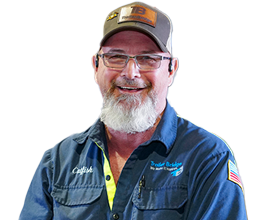
The Underdogs: Smaller US Ports Stepping Up for Shippers
Executive Insights by Trailer Bridge CEO Mitch Luciano
As Daniel B. Maffei & Louis E. Sola wrote for Supply Chain Dive, “Everyone is responsible for port congestion, but no one is to blame.” In fact, the overcrowding and wait times at American mega-ports—particularly on the west coast—has become so severe it was recently the subject of a Federal Maritime Commission investigation.
The U.S. economy’s 6.2% forecasted growth is good news for business but also means this congestion at the nation’s largest seaports will likely continue. International shippers might be tempted to see overcrowding as an insurmountable problem, but there’s actually a solution: look beyond those major ports.
“As the world continues to globalize, there will be demand for narrowly focused ports,” says Walter Kemmsies, chief strategist at real estate and investment management services firm JLL. “Just because it’s not the Port of Los Angeles doesn’t mean a smaller port doesn’t serve an important purpose.”
While there are some things smaller ports can’t do, they can often save shippers time and money, provide flexibility and efficiency, and handle more than you think.
Increasing the velocity of freight
Small ports are in the process of reinventing themselves for new realities and priorities during the economic recovery, and they excel at serving their region’s industries. Around the Great Lakes, ports handle international freight for industrial manufacturing. Florida ports handle a significant volume of inbound cargo from Asia, and the Jacksonville Port Authority (JAXPORT) in Northeast Florida handles 85% of cargo moving between mainland USA and Puerto Rico.
Small ports tend to be less congested than the big ones, but congestion is not just about berth. It’s also rail and truck access. “When a container comes into a large East Coast port, … it might sit in the container yard for two to three days, then go to a railyard and sit again,” says William Friedman, president and CEO, Port of Cleveland. “But our port is fluid, and cargo moves quickly.”
International freight can move through Customs faster at a smaller port because fewer people are involved, the right person can be reached right away, and freight can be released sooner after exams or documentation reviews.
Smaller ports naturally provide superior customer service. Because they can give more individual attention to shippers, smaller ports are better at problem solving and offering flexible solutions.
Investing for the future
President Biden is hoping Congress will approve The American Jobs Plan this year, $17 billion of which is earmarked for inland waterways, coastal ports, land ports of entry, and ferries. But even before this bill was drafted, many ports were investing in infrastructure upgrades to handle the world’s growing ship size.
The Port of Boston plans to complete projects in 2021 that will allow it to service ships up to 14,000 TEU of capacity, up from 10,000 TEU currently, for example. The US Army Corps of Engineers recently finished dredging the outer Boston Harbor to a 51-foot depth and its main ship channel to a 47-foot depth and widening its turning basin.
And at JAXPORT, the harbor will be deepened to 47 feet and related crane and berth infrastructure added to accommodate increasingly larger container ships by 2022. Already, more than $72 million in phased yard improvements are underway and the most recent $104 million phase of berth enhancements has added an additional 700 linear feet of newly rebuilt deepwater berthing space.
Update: The JAXPORT Harbor Deepening Project was completed in May 2022.
“From berth enhancements that will support more environmentally-friendly cranes to terminal improvements and a deeper harbor, 2021 will be a year of significant progress for many of our major growth projects,” JAXPORT CEO Eric Green said in a written statement. “These projects all work together to maximize Jacksonville’s logistics advantages for our customers and bring more jobs and business to Northeast Florida.”
There are big benefits for shippers at smaller ports
Smaller ports can often serve your international freight shipping needs just as well as larger ports, and you can still take advantage of end-to-end services, brokerage services, and freight forwarding. In Jacksonville, for example, the port is strategically located so shippers can reach the majority of consumers in the US. Within the southeast, Florida is one of the fastest-growing consumer markets, and shippers doing business through its ports will be well-positioned to capitalize on that growth.
Smaller, lesser-known ports are often overlooked because shippers think using them extends travel times and adds expense, yet the opposite is often true. They can offer substantial benefits for shippers looking to rethink the supply chain to find efficiencies and cost savings.
Creative solutions – such as routing freight through a smaller gateway – are essential as we face continued disruption in the supply chain in the months ahead.

